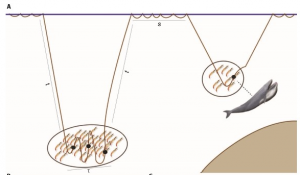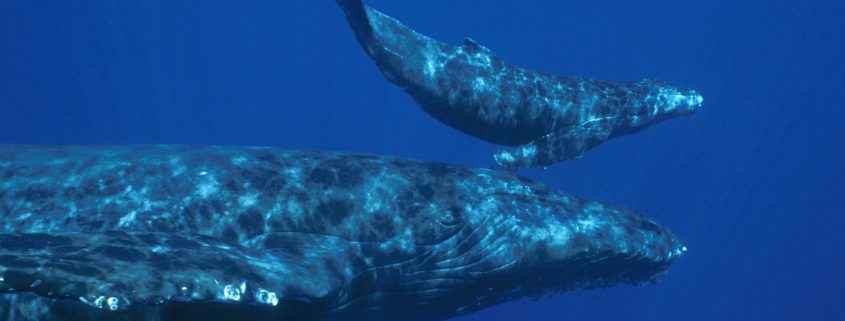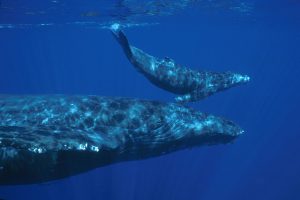“Blue Whales (Balaenoptera musculus) optimize foraging efficiency by balancing oxygen use and energy gain as a function of prey density” Blog Review
By Dana Tricarico, SRC Intern
Blue whales are thought to be the largest animals to have ever lived, and despite this, maintain their energy and weight through the foraging small crustaceans known as krill. Researchers at NOAA Fisheries West Coast Region, as well as Oregon State University and Stanford University looked further into their foraging behavior to find out how this species maximizes energy efficiency. In order to do this, researchers kept in mind that the densest krill patches tend to be deeper in the ocean and therefore, require more oxygen recovery time at the surface as well as less time to forage at those depths. In order to determine how blue whales feed while still maintaining their energy, these researchers compared the foraging of 55 tagged adult blue whales off the coast of California. To see the density of the krill intake from these tagged whales, acoustic surveys were used.
The researchers found that their feeding pattern is done by a unique form of feeding called “lunge-feeding,” i.e. High speed acceleration during feeding. This form of feeding leads to engulfment of large volumes of water filled with their prey. When krill were spread out, the blue whale’s tendency was to decrease the number of lunges per dive in order to retain their oxygen levels. In contrast, increased lunge-feeding was done when aiming for the dense krill patches despite the high oxygen use associated with deeper dives. Jeremy Goldbogen, co-author of the study, explains this trade off by saying, “the increase in the amount of energy they get from increased krill consumption more than makes up for it.” In other words, despite using a great deal of energy and oxygen, the benefits of the foraging in dense krill patches outweigh the negatives. Specifically, dense patches of krill can be classified as about 100 to 200 individuals in a cubic meter of water. Anywhere below that amount, blue whales will invest less effort.

The theoretical responsive of the blue whale foraging technique created by looking at both the depth of the prey and the prey density at that depth. The right hand side of the picture shows high prey density while the left hand side shows low prey density. Different parameters are looked at in order to calculate foraging performance including time (t), bottom time, surface time (s) and number of lunges (l), which are marked by black circles.
At present, blue whales are considered endangered by the International Union for Conservation of Nature. Researchers of this paper state that by learning more about these foraging techniques, it can help determine how to protect these species. As Friedlaender explains, “If they are disturbed during the intense, deep-water feeding, it may not have consequences today, or this week, but it could over a period of months. There can be impacts on their overall health, as well as their fitness and viability for reproduction.” This study helps show that foraging techniques in these top predators is not random, but instead is planned depending on prey densities. Perhaps protecting them during their deep water feeding of these dense krill patches can save them further endangerment and better learn how to help them recover from threats in the future.





Leave a Reply
Want to join the discussion?Feel free to contribute!